What Note is Sandalwood Essential Oil
Sandalwood essential oil is a popular aromatic oil known for its rich, woody scent and numerous health benefits.
It promotes relaxation, reduces stress, improves skin health, and boosts mental clarity.
In this article, we will explore how sandalwood essential oil is made, its unique scent profile, ways to use it, safety precautions, potential side effects, and where to purchase it.
Whether you’re new to essential oils or a seasoned user, there’s plenty to learn about the wonders of sandalwood essential oil.
Key Takeaways:
What is Sandalwood Essential Oil?
Sandalwood essential oil, derived from the heartwood of the Sandalwood tree, is a prized aromatic substance highly valued for its rich fragrance and diverse applications in aromatherapy and perfumery. Indian Sandalwood, particularly the renowned Mysore Sandalwood variety, is esteemed for its exceptional quality and sustainable growth practices in regions like Australia, garnering adulation worldwide.
Known for its woody, warm, and sweet aroma, Sandalwood essential oil has been used for centuries in various cultures for its therapeutic properties. This versatile oil is not only popular for its calming and grounding effects in aromatherapy but is also a staple ingredient in high-end perfumes, soaps, and skincare products.
- In terms of sustainability, Mysore Sandalwood stands out for its slow growth, with trees taking decades to reach maturity, ensuring a rich and potent oil extraction process.
- Australia’s Sandalwood plantations have gained recognition for their environmentally conscious practices, contributing to the conservation of this precious species.
How is Sandalwood Essential Oil Made?
Sandalwood essential oil is typically extracted through the process of steam distillation from the heartwood of the Sandalwood tree. This method ensures the preservation of the oil’s delicate aroma compounds and sesquiterpene molecules, contributing to its distinctive fragrance and therapeutic properties.
This ancient technique involves passing steam through the Sandalwood wood chips, causing the oil glands within the wood to release the essential oil. The steam then carries the oil to a cooling system where it condenses, separating the water-soluble components from the oil. The result is a pure, concentrated Sandalwood essential oil with its characteristic woody, earthy scent.
What is the Scent Profile of Sandalwood Essential Oil?
The scent profile of Sandalwood essential oil is characterized by its warm, woody aroma with subtle floral undertones, making it a versatile ingredient in perfumery, incense, and aromatic blends. Its unique fragrance blends harmoniously with floral notes like Jasmine and Ylang-ylang, as well as woody scents such as Rosewood and earthy tones like Patchouli and Vetiver.
What sets Sandalwood essential oil apart is its deep, rich scent that evokes a sense of tranquility and grounding. Its aromatic nuances create a calming effect, making it a popular choice in aromatherapy practices. This oil is often used in meditation blends due to its ability to promote relaxation and mental clarity.
In the world of perfumery, Sandalwood plays a vital role in creating well-balanced fragrances. Its warm and creamy notes add depth and sophistication to a variety of scents, enhancing their overall complexity. When combined with citrus oils like Bergamot or spicy notes such as Black Pepper, Sandalwood can transform a fragrance into a timeless masterpiece.
What are the Benefits of Sandalwood Essential Oil?
Sandalwood essential oil offers a plethora of benefits, ranging from its skincare properties for improving skin health to its therapeutic applications in promoting relaxation, mental clarity, and emotional well-being. Its spiritual uses have been revered for centuries, making it a versatile and highly valued essential oil.
The therapeutic properties of Sandalwood essential oil can be attributed to its rich composition, including Santalol and Santyl acetate, which are known for their anti-inflammatory and antimicrobial effects.
The oil’s ability to soothe skin irritations, reduce acne, and hydrate dry skin has made it a popular choice in skincare products.
When used in aromatherapy, sandalwood oils can help calm the mind, alleviate stress, and enhance focus.
Its deep, woody aroma is believed to enhance spiritual practices, meditation, and mindfulness, creating a sacred ambiance.
Promotes Relaxation and Reduces Stress
Sandalwood essential oil is renowned for its ability to promote relaxation and reduce stress levels due to its calming aroma.
When incorporated into aromatherapy blends, the sesquiterpene molecules found in Sandalwood oil play a crucial role in enhancing its calming effects. These molecules have the ability to affect the brain’s limbic system, the center of emotions and memory, helping to ease feelings of anxiety and tension.
Plus its psychological benefits, Sandalwood oil also boasts physical advantages. Its anti-inflammatory properties can help alleviate muscle tension and headaches, further contributing to an overall sense of calmness and well-being.
Improves Skin Health
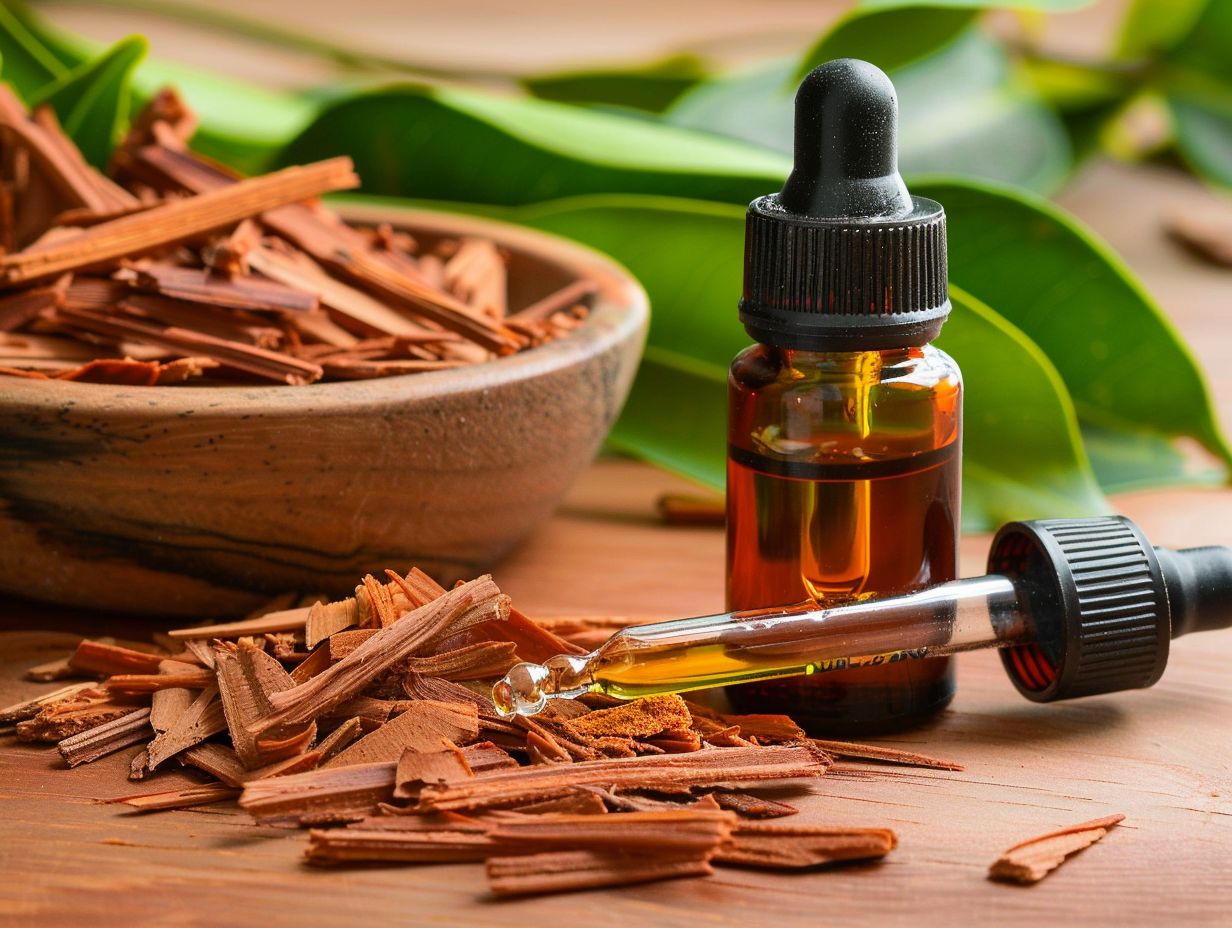
Its ability to soothe irritation and reduce redness makes it a valuable ingredient in skincare products targeting sensitive skin. Additionally, sandalwood oil’s astringent properties help tighten pores, leading to a more youthful appearance and smoother skin texture.
When combined with lavender essential oil, the calming and balancing effects of both oils create a powerful blend for stressed or acne-prone skin. Mixing sandalwood oil with rosehip seed oil can boost collagen production and improve skin’s elasticity for a firm, radiant complexion.
Boosts Mental Clarity and Focus
Sandalwood essential oil is prized for its ability to enhance mental clarity and improve focus, making it a valuable tool for promoting concentration and cognitive function. Whether used in diffusers, topical applications, or perfumery, Sandalwood oil stimulates cognitive abilities and fosters a sense of alertness and mental acuity.
The woody and earthy aroma of Sandalwood essential oil has been shown to have a calming effect on the mind, reducing stress and anxiety levels, which in turn can lead to improved mental focus and productivity.
Research suggests that inhaling the scent of Sandalwood oil can help increase oxygen flow to the brain, thereby enhancing cognitive performance and overall brain function.
The anti-inflammatory properties of Sandalwood oil may contribute to reducing brain inflammation, which is often linked to cognitive decline and impaired concentration.
How to Use Sandalwood Essential Oil?
To make the most of Sandalwood essential oil, it can be used in various ways such as aromatherapy, topical applications, and ingestion (with caution). Understanding the proper dilution, blending techniques, and storage guidelines is crucial to ensure the safe and effective use of this precious oil.
When using Sandalwood essential oil for aromatherapy, add a few drops to a diffuser or inhale it directly from the bottle for a calming effect. For topical applications, consider blending it with a carrier oil like coconut or jojoba oil before applying it to the skin. The recommended dilution ratio is usually 2-3 drops of Sandalwood essential oil per teaspoon of carrier oil to prevent skin irritation.
For those interested in ingesting Sandalwood essential oil, it’s important to consult with a healthcare professional first due to its potency. If approved, only a single drop diluted in a glass of water or mixed into a recipe is typically recommended. Remember, proper storage in a dark glass bottle in a cool, dry place away from direct sunlight will help preserve the oil’s quality and potency for longer periods.
Aromatherapy
In aromatherapy, Sandalwood essential oil is a versatile ingredient that can be diffused to create a calming and grounding atmosphere. Its unique aroma blends harmoniously with floral scents like Jasmine and woody notes like Rose, offering a soothing and aromatic experience that promotes relaxation and emotional well-being.
Known for its rich, woody scent, Sandalwood essential oil is often used in meditation practices to enhance focus and mindfulness. When combined with Lavender or Bergamot, it creates a tranquil environment ideal for unwinding after a long day. Sandalwood is a popular choice for skincare products due to its soothing properties, helping to moisturize and rejuvenate the skin.
For those seeking a more spiritual experience, Sandalwood essential oil can be blended with Frankincense or Myrrh to deepen meditation or spiritual rituals. Its earthy undertones provide a sense of connection to nature and inner peace, making it a staple in holistic healing practices.
Topical Application
For topical application, Sandalwood essential oil can be diluted in carrier oils and applied to the skin for its beneficial properties. When blended with suitable carrier oils and used in skincare routines, Sandalwood oil nourishes the skin and promotes a healthy complexion. Caution should be exercised to ensure proper dilution and skin sensitivity.
It is recommended to dilute Sandalwood essential oil properly before direct application to the skin to prevent any adverse reactions.
Popular carrier oils like jojoba, coconut, or almond oil can be used to dilute Sandalwood oil. These carrier oils not only work as base oils but also enhance the absorption of Sandalwood’s active compounds. When mixing Sandalwood with carrier oils, a general rule of thumb is to use a 2-3% dilution ratio to maintain efficacy and safety. This percentage ensures that the essential oil is potent enough to be effective without causing any skin irritations. It is crucial to perform a patch test before widespread application to rule out any allergic reactions or sensitivities.
Remember that every individual’s skin reacts differently, so monitoring the skin’s response after application is essential. If any irritation, redness, or discomfort occurs, discontinue use immediately and seek advice from a healthcare professional. When used with care and attention to proper dilution and skin sensitivity, Sandalwood essential oil can be a valuable addition to your skincare routine, offering a natural way to nourish and rejuvenate your skin.
Ingestion (with caution)
Ingesting Sandalwood essential oil should be approached with caution and under expert guidance due to its concentrated nature. Compliance with safety regulations and consulting with a qualified professional are essential steps to ensure the appropriate and responsible ingestion of Sandalwood oil for potential therapeutic benefits.
Regulatory guidelines play a crucial role in governing the consumption of essential oils, including Sandalwood. Different countries have specific regulations regarding the internal use of essential oils, emphasizing the need for thorough research before embarking on such practices. It is advisable to seek guidance from a certified aromatherapist or healthcare provider who is knowledgeable about essential oil safety. Expert advice can help determine the right dosage and application method for the desired health benefits.
Are there any Safety Precautions to Consider?
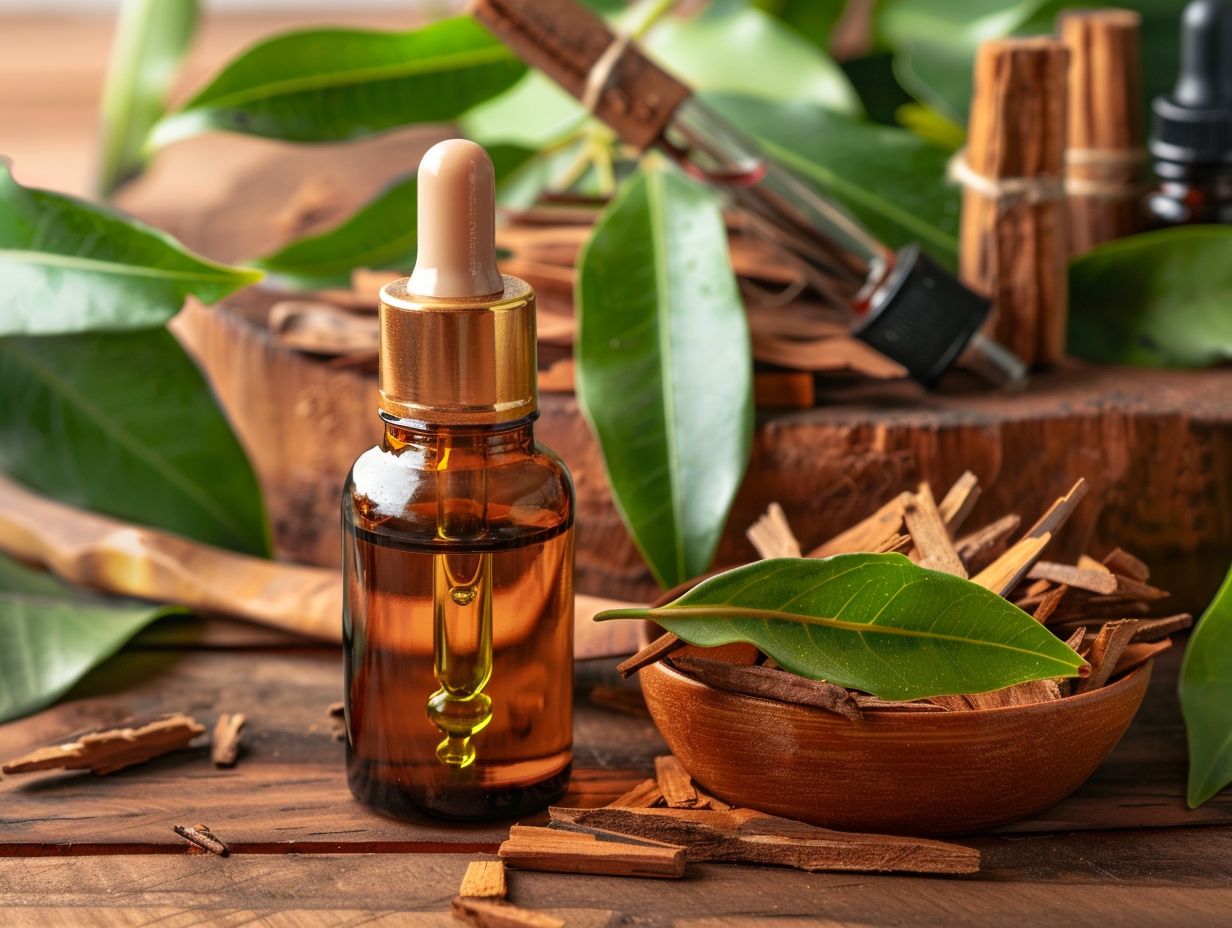
For optimal results, store Sandalwood essential oil in a cool, dark place away from direct sunlight or heat sources to maintain its potency and extend its shelf life. Properly sealed containers are recommended to prevent oxidation and preserve the oil’s aromatic qualities.
When diluting Sandalwood oil for topical application, the recommended ratio is typically around 2-3 drops per teaspoon of carrier oil. This helps prevent skin irritation and ensures that the oil is properly absorbed without causing adverse reactions.
It is crucial to perform a patch test before applying Sandalwood oil to larger areas of the skin, especially for individuals with sensitive skin or allergies. This simple test involves applying a diluted drop of oil to a small area and monitoring for any negative reactions.
Dilute Before Use
Ahead of using Sandalwood essential oil, it is essential to dilute it with a suitable carrier oil to minimize the risk of skin irritation or sensitivities.
Dilution not only ensures safe application but also extends the longevity and efficacy of the oil, enhancing its benefits for various uses. When selecting a carrier oil for dilution, it is wise to opt for those with mild properties that complement Sandalwood’s therapeutic effects. Some popular carrier oils include Jojoba, Sweet Almond, or Fractionated Coconut oil.
Proper storage of Sandalwood essential oil is crucial in maintaining its quality and potency. It is recommended to store it in a cool, dark place away from direct sunlight and heat to prevent degradation.
Do Not Ingest Without Expert Guidance
Ingesting Sandalwood essential oil without expert guidance is not recommended due to its potency and potential risks. Seeking advice from qualified professionals or aromatherapists is crucial to ensure safe and appropriate ingestion practices that align with regulatory guidelines and individual health considerations.
While Sandalwood essential oil can offer various health benefits when used correctly, improper ingestion can pose serious health hazards. The concentration and chemical properties of the oil make it crucial to follow precise dosages and methods under expert supervision.
Failure to do so could lead to adverse effects such as gastrointestinal issues, allergic reactions, or even toxicity. It’s essential to remember that what works for one person may not necessarily be suitable for another due to individual differences in health conditions and sensitivities.
Avoid During Pregnancy
Pregnant individuals are advised to avoid using Sandalwood essential oil due to its potential effects on hormonal balance and pregnancy-related complications. As a cautionary measure, it is recommended to consult healthcare providers or aromatherapists before incorporating Sandalwood oil into routines during pregnancy.
During pregnancy, the safety of essential oils becomes paramount as they can impact the delicate hormonal balance and potentially lead to adverse effects on both the mother and the unborn baby.
When considering Sandalwood oil specifically, there are concerns surrounding its potential to cause uterine contractions, which might pose risks of premature labor or miscarriage. Therefore, seeking professional guidance is crucial to ensure the safest choices for the well-being of the expectant mother and the developing fetus.
What are the Side Effects of Sandalwood Essential Oil?
While Sandalwood essential oil offers numerous benefits, it may also pose risks such as skin irritation and allergic reactions in some individuals. Understanding the potential side effects and monitoring skin responses are essential steps to mitigate adverse reactions and ensure safe usage of this potent essential oil.
Some common side effects of Sandalwood essential oil may include mild skin irritation, redness, or itching. For individuals with sensitive skin or allergies, there is a possibility of experiencing more severe allergic reactions such as hives, swelling, or even difficulty breathing.
To identify adverse responses, always perform a patch test by diluting the oil with a carrier oil and applying a small amount on a small area of skin, then wait for 24 hours to observe any reactions. If any irritation occurs, discontinue use immediately.
If you experience persistent or severe side effects after using Sandalwood essential oil, it is crucial to seek medical advice promptly. In some cases, individuals may require medical treatment to manage allergic reactions or skin issues caused by the oil.
Skin Irritation
Skin irritation is a potential side effect of using Sandalwood essential oil, particularly when applied undiluted or in high concentrations. Conducting a patch test prior to topical application and ensuring proper dilution with carrier oils can help minimize the risk of skin reactions and promote safe use of the oil for skincare purposes.
It is crucial to remember that different skin types react diversely to essential oils like Sandalwood, and what works for one person may not be suitable for another.
For maintain skin safety during the use of Sandalwood oil, it is recommended to dilute the oil properly before application. Mixing a few drops of Sandalwood oil with a carrier oil, such as coconut or jojoba oil, can help reduce the chances of skin irritation while still benefiting from the oil’s aromatic and therapeutic properties.
Allergic Reactions
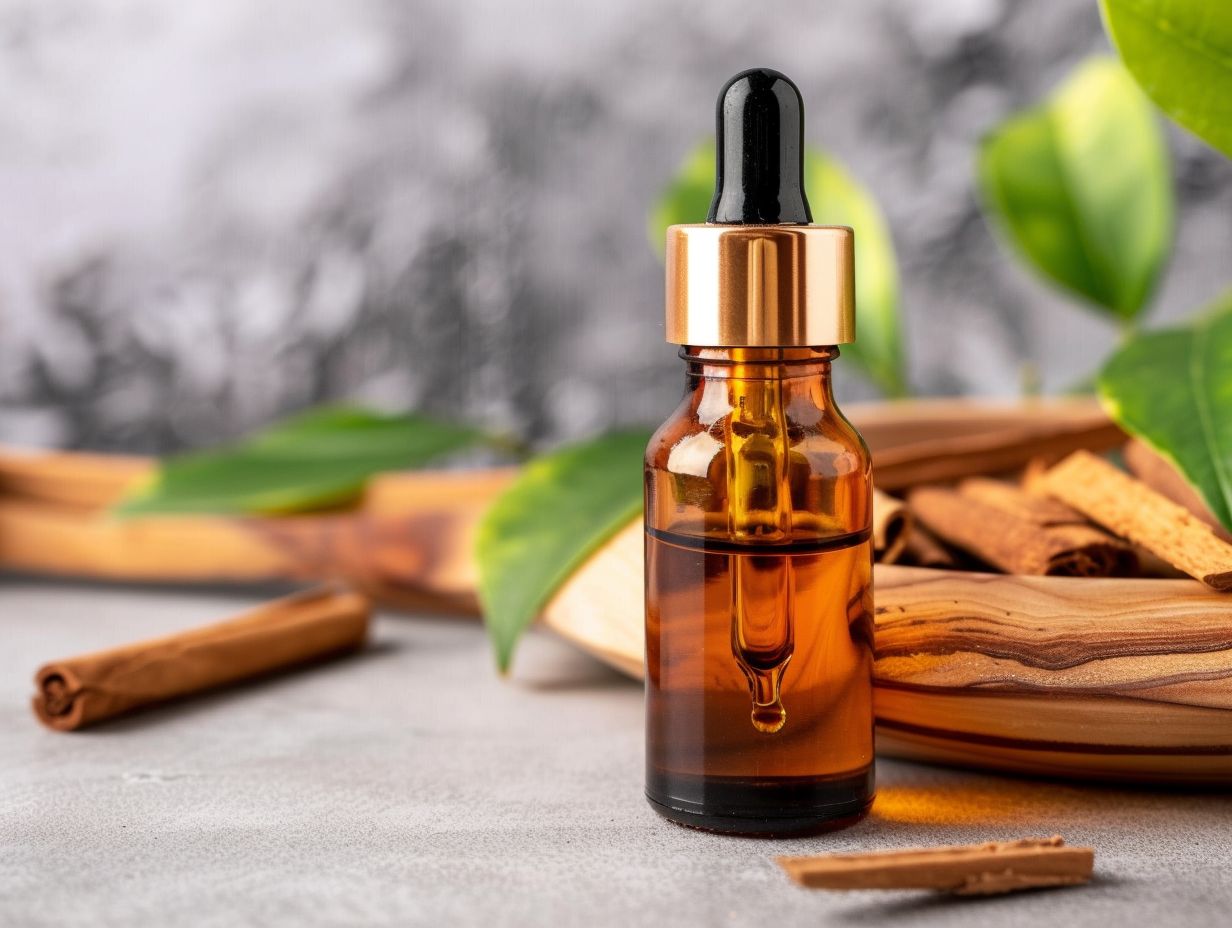
Individuals prone to allergies should perform a patch test by applying a small amount of diluted Sandalwood oil on their skin to check for any adverse reactions before full application. This simple test can help in early detection of sensitivities and prevent severe allergic responses.
Consulting healthcare professionals is crucial, especially for those with existing skin conditions or respiratory ailments, to ensure safe usage of Sandalwood oil. Healthcare providers can provide personalized advice, recommend alternative products, or suggest ways to mitigate allergic symptoms if they arise.
In cases of severe allergic reactions such as difficulty breathing or swelling, immediate medical attention is necessary. Understanding the risks associated with Sandalwood essential oil allergies enables individuals to take proactive measures for their well-being.
Where Can You Purchase Sandalwood Essential Oil?
Sandalwood essential oil can be purchased from reputable sources specializing in essential oils, aromatherapy products, and natural skincare solutions. With origins in regions like India and Australia, where Sandalwood trees thrive, consumers can explore trusted retailers, online platforms, and sustainable brands to procure high-quality Sandalwood oil for various applications.
When purchasing Sandalwood essential oil, it is essential to ensure the oil is sourced ethically and sustainably. Reputable vendors often provide detailed information about the extraction process, ensuring transparency in their production methods. Understanding the source of the Sandalwood oil, whether it is from mature trees or sustainable plantations, can significantly impact the quality of the final product.
Opting for brands that prioritize sustainability not only guarantees authenticity but also supports eco-conscious practices in the industry. By choosing environmentally responsible producers, consumers contribute to the preservation of Sandalwood trees and the communities that rely on them. This conscientious approach to shopping for Sandalwood oil promotes a more sustainable supply chain and ensures the longevity of this precious resource.
Frequently Asked Questions
What Note is Sandalwood Essential Oil?
Sandalwood essential oil is classified as a base note.
What does it mean for an essential oil to be a base note?
Base notes are the heaviest and slowest evaporating oils, providing a strong and long-lasting aroma to a blend.
Are there any other essential oils that have a similar note to Sandalwood?
Other base note oils that have a similar earthy and woody scent to Sandalwood include Cedarwood, Patchouli, and Vetiver.
Can Sandalwood essential oil be used alone as a perfume?
Yes, Sandalwood essential oil can be used on its own as a perfume due to its strong and long-lasting scent.
What are the benefits of using Sandalwood essential oil in aromatherapy?
Sandalwood essential oil has calming and grounding properties, making it beneficial for reducing anxiety and promoting relaxation.
Is Sandalwood essential oil safe to use on the skin?
Yes, Sandalwood essential oil is safe to use on the skin when diluted properly. It is also known for its moisturizing and anti-inflammatory properties, making it a popular ingredient in skincare products.

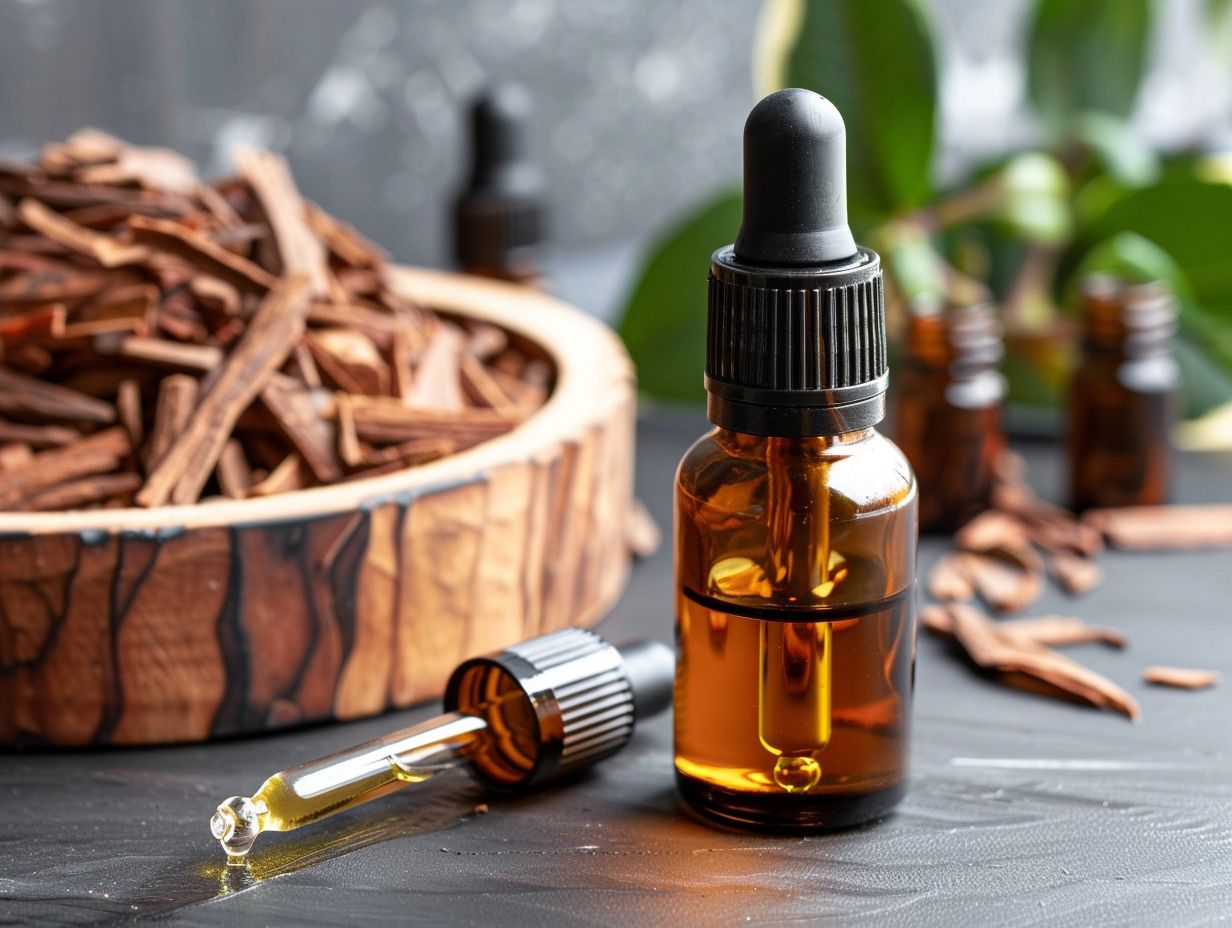




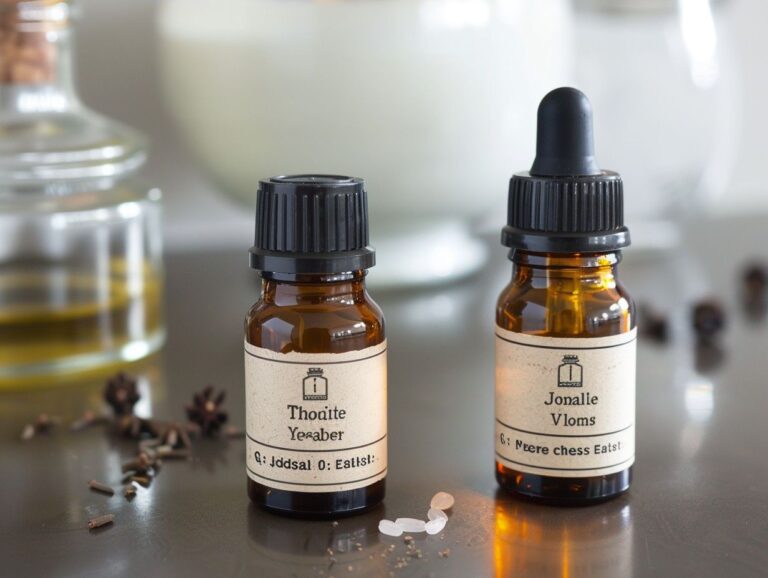

One Comment